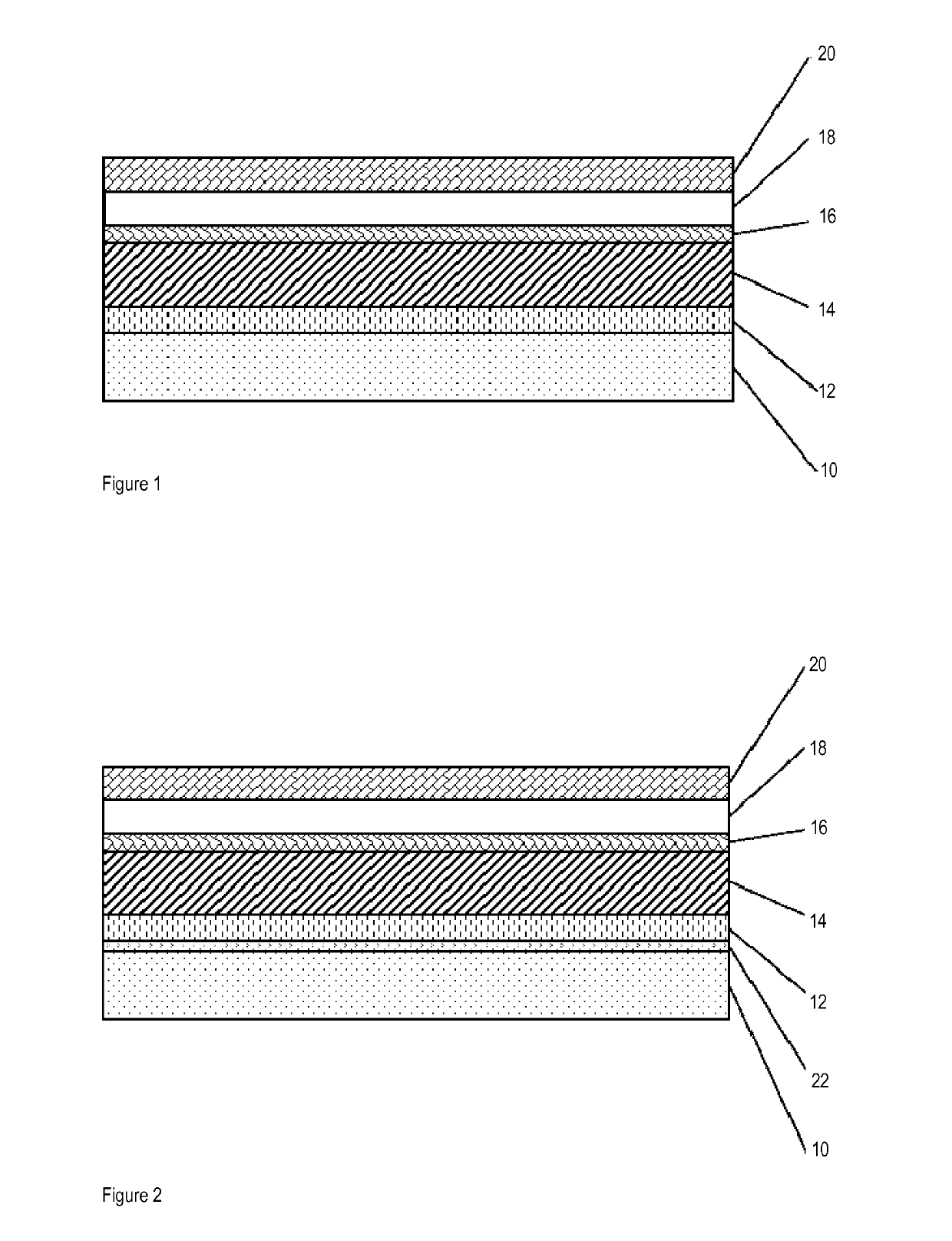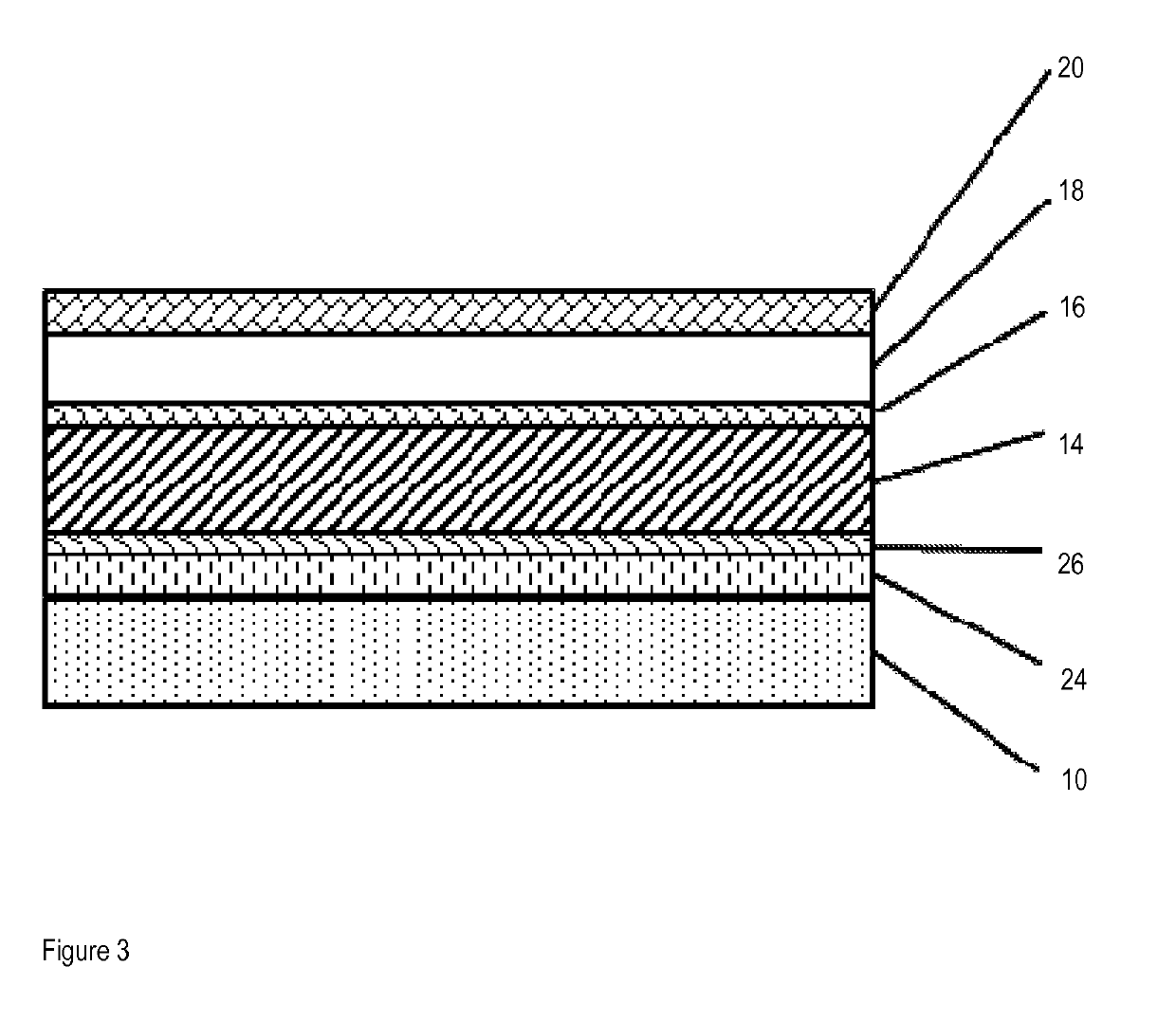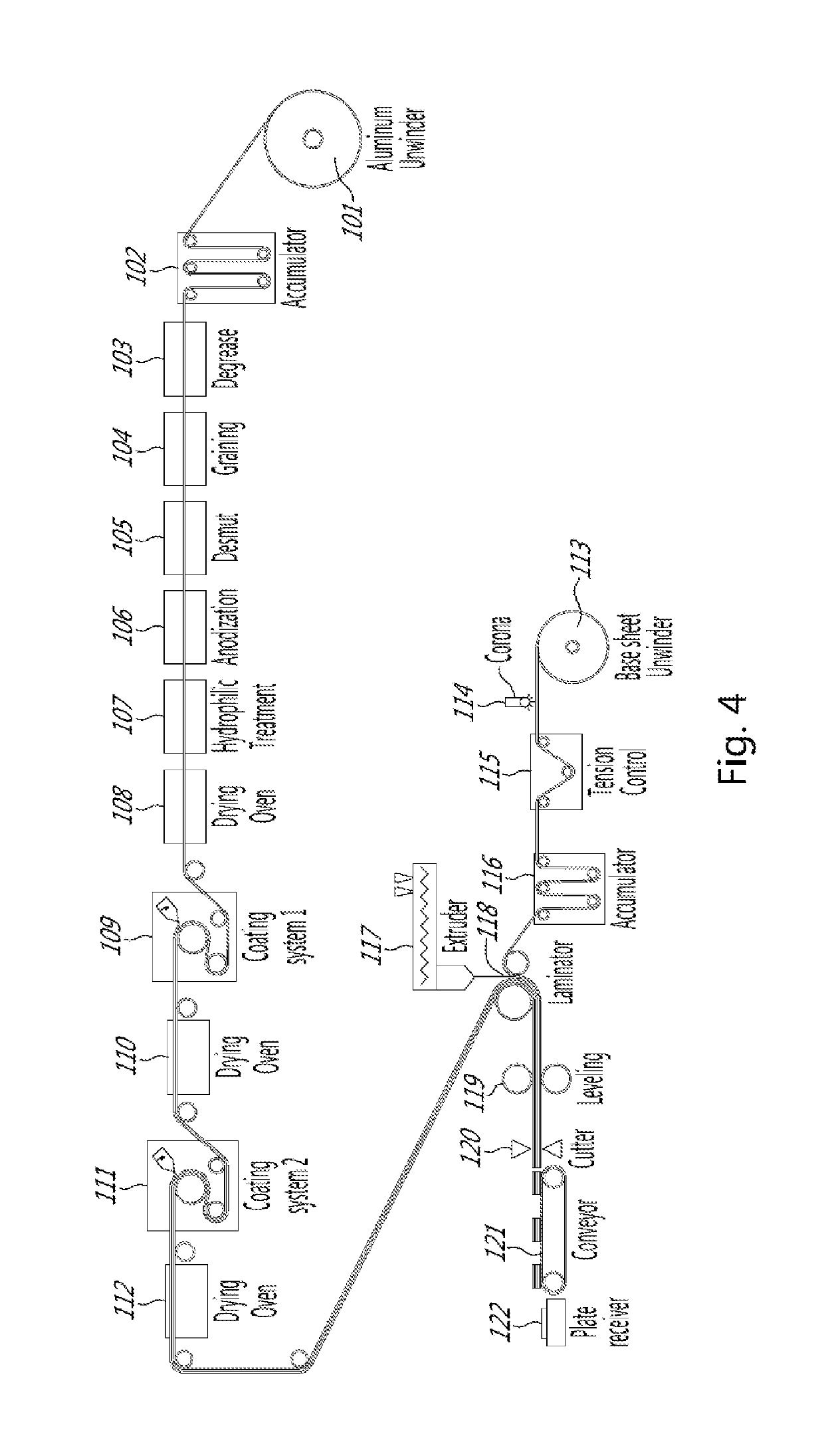Lithographic printing plate comprising a laminated substrate
a technology of laminated substrates and printing plates, applied in the direction of printing processes, film/foil adhesives, weaving, etc., can solve the problems of preventing their wide acceptance in the industry, affecting the quality of printed images, and difficult to recycle substrates
- Summary
- Abstract
- Description
- Claims
- Application Information
AI Technical Summary
Benefits of technology
Problems solved by technology
Method used
Image
Examples
example 1
Printing Plate Comprising a Hot-Melt Adhesive and its Mechanical Processing
[0246]Manufacture. This printing plate was produced following a process similar to that shown in FIG. 4. However, there was no coating of a second image layer or overcoat layer. In other words, steps 111 and 112 of FIG. 4 were omitted.
[0247]An aluminum substrate (see the Glossary above) was subjected to the following electrolytic, coating and drying process:[0248]1) Washing with an aqueous alkaline solution containing sodium hydroxide (3.85 g / l) and sodium gluconate (0.95 g / l) at 65° C.;[0249]2) Neutralizing with aqueous hydrochloric acid (2.0 g / l);[0250]3) Washing with water;[0251]4) Electrolytic graining in an aqueous electrolyte containing an aqueous solution of hydrochloric acid (8.0 g / l) and acetic acid (16 g / l), using carbon electrodes at 25° C. The current and charge density were 38.0 A / dm2 and 70.0 C / dm2, respectively;[0252]5) Desmuting with an aqueous sodium hydroxide solution (2.5 g / l);[0253]6) Neut...
example 2
Printing Plate Comprising a Coated Adhesive and its Chemical Processing Using an Alkaline Media
[0270]Manufacture.
[0271]This printing plate was produced following a process similar to that shown in FIG. 5. However, there was no coating of a second image layer or overcoat layer. In other words, steps 211 and 212 of FIG. 5 were omitted.
[0272]The manufacture of this printing plate was similar to that described in Example 1, except for the following. A BOPET base film was corona treated. An adhesive solution containing 5% Elastack® 1000 and 95% Dowanol PM was coated on the BOPET base film using a slot-die coater. This solution was then dried at 120° C. using hot air to produce an adhesive layer. The adhesive coated BOPET was then laminated on the back of the aluminum layer.
[0273]Use.
[0274]After one week storage, the plate was imaged with a plate-setter (PlateRite 8600S, available from Screen, Japan) at an energy density 150 mJ / cm2. The imaged plate was developed with GSP85 developer at 2...
example 3
Printing Plate Comprising a Coated Adhesive and its Chemical Processing Using an Acidic Media
[0277]Manufacture and Use. This printing plate was identical to that of Example 2 except that Elastack® 1000 was replaced by Elastack® 1020. The obtained printing plate had the same prepress and press characteristics as that described for the printing plate of Example 2. No delamination was observed during imaging, development and printing.
[0278]Chemical Processing in View of Recycling.
[0279]The separation of the BOPET base layer from the aluminum layer was effected by immersing the used plate into an aqueous solution containing 1M hydrochloric acid at 35° C. for 1 hour. The adhesive layer dissolved and the BOPET base film was peeled from the aluminum layer by a home-made mechanical peeling device.
PUM
| Property | Measurement | Unit |
|---|---|---|
| Tg | aaaaa | aaaaa |
| Tg | aaaaa | aaaaa |
| thickness | aaaaa | aaaaa |
Abstract
Description
Claims
Application Information
 Login to View More
Login to View More - R&D
- Intellectual Property
- Life Sciences
- Materials
- Tech Scout
- Unparalleled Data Quality
- Higher Quality Content
- 60% Fewer Hallucinations
Browse by: Latest US Patents, China's latest patents, Technical Efficacy Thesaurus, Application Domain, Technology Topic, Popular Technical Reports.
© 2025 PatSnap. All rights reserved.Legal|Privacy policy|Modern Slavery Act Transparency Statement|Sitemap|About US| Contact US: help@patsnap.com



